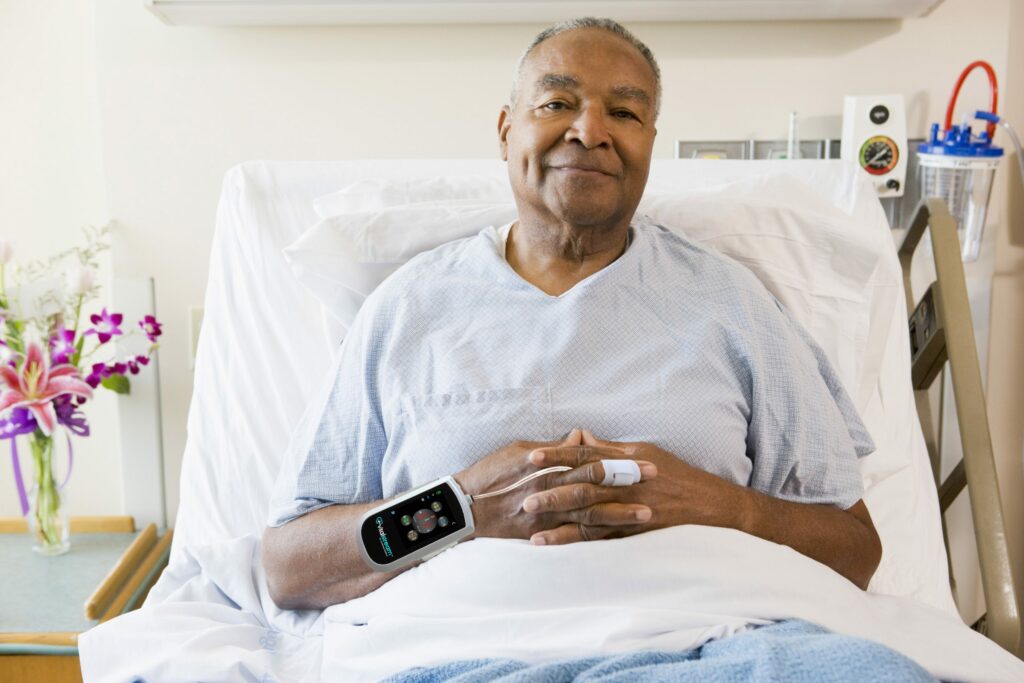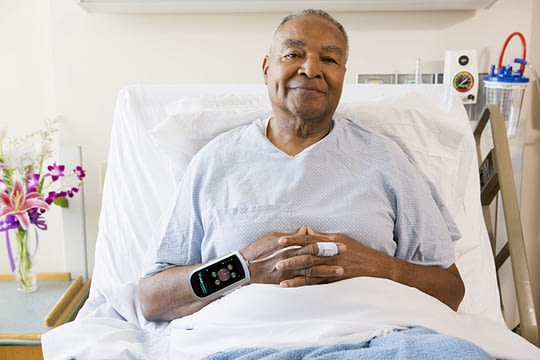Uncategorized
The Benefits Of Non-Invasive Blood Pressure Monitoring
VitalStream™ provides actionable, beat-by-beat data to help clinicians identify patient deterioration earlier, intervene earlier, and optimize treatment decisions such as whether and when to administer fluids, drugs, or therapies.
Read MoreFDA Clears Caretaker Medical’s Wireless Monitor for NonInvasive & Continuous Cardiac Output, Stroke Volume, and Advanced Hemodynamics
VitalStream™ provides actionable, beat-by-beat data to help clinicians identify patient deterioration earlier, intervene earlier, and optimize treatment decisions such as whether and when to administer fluids, drugs, or therapies.
Read MoreVital sign measurement in hospital patients – how a wearable monitor can transform the patient experience
The most common intervention performed in hospitals is the measurement of vital signs. While nurses are confident about their ability to gather and interpret the data needed to identify patients at risk of deterioration, there are concerns about the frequency of observation and at times the accuracy of vital sign measurements. A continuous, wearable vitals…
Read MoreContinuous blood pressure monitor: uses, applications and advantages
The application of continuous blood pressure monitoring has historically been limited to the intensive Care Unit (ICU) and Post-Anesthesia Care Unit (PACU), due to the cost and invasiveness of the equipment. However, the development of ICU grade wearable patient monitors is opening up opportunities to widen the use of continuous blood pressure monitors across the…
Read MoreThe Role of a Wireless Patient Monitoring System for At Home Care
Among the many benefits being brought to the healthcare service by wireless patient monitoring is the facility to escalate home care for both chronic and acute conditions. Physicians have long recognized the benefits of care at home but hospitals have been reluctant to send acute patients home because it would have impacted on their revenue…
Read MoreDigital healthcare: the future of modern medicine
As new variants of the COVID-19 virus continue to pile pressure on already strained health services around the world, what hope is there for the future of medicine? With an ageing global population and a growing shortage of medical professionals, how can the healthcare industry get on top of the burgeoning workload to create breathing…
Read MoreThe role of remote patient monitoring in chronic care
Wireless monitors like VitalStream™ can help to drive down the cost of chronic disease management and deliver better patient outcomes. Chronic disease management (CDM) is one of biggest challenges facing global health. Chronic conditions such as heart disease and diabetes are the leading cause of mortality in the developed world by far, and across the…
Read MoreVitalStream™ – Ushering in the wireless era of hemodynamic monitoring
Medical practitioners know that even a brief hypotensive event can harm a patient. This is why the ICU employs continuous hemodynamic monitoring to catch the earliest signs of such events and enable prompt intervention. However, studies have found that post-operative patients returning to the general ward are still at risk of acute hypotensive events leading…
Read MoreMedTech Innovator Announces Caretaker Medical among Finalists for $500K 9th Annual Industry Competition
MedTech Innovator, the largest accelerator of medical devices in the world, announced that Caretaker Medical have been selected among five finalists out of 1,100 applicants to compete for the title of MedTech Innovator 2021. “Every year I am more impressed by the caliber of companies that take part in our Accelerator and Showcase programs,” said…
Read MoreFDA Clears Caretaker Medical’s Wireless Platform for Continuous Noninvasive Blood Pressure and Hemodynamic Monitoring
We are excited to announce the U.S. Food and Drug Administration (FDA) clearance of the company’s next-generation VitalStream™ wireless blood pressure and hemodynamic monitoring platform.
Read More








